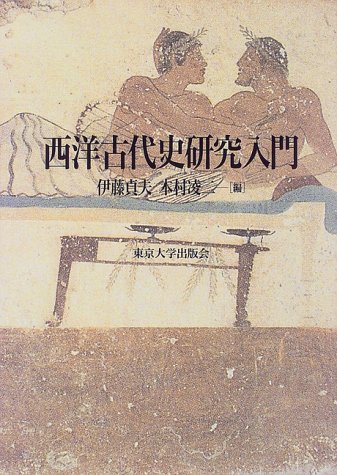4 0 0 0 OA 古代ギリシア史研究と奴隷制
- 著者
- 伊藤 貞夫
- 出版者
- 法制史学会
- 雑誌
- 法制史研究 (ISSN:04412508)
- 巻号頁・発行日
- vol.2005, no.55, pp.121-154,10, 2006-03-30 (Released:2011-04-13)
近年におけるギリシア・ローマ経済史研究で目を惹くのは、M・I・フィンリーの古代経済論への諸家の対応である。プリミティヴィズムとモダニズムとの対抗として要約される、この種の研究視角は数多くの成果を生んできたが、そのなかにあってフィンリーの古代史観の一つの軸をなしながら、方法論的に十分な檢討と意義の評価を受けていないのが彼の奴隷制論である。その特徴は、古典期のアテネやローマ盛期のイタリア・シチリアに見られる大量かつ集中的な奴隷使役を、古典古代にあっても特殊な事例と看做し、相対化するところにある。小論は、前五世紀のクレタで刻されたゴルチュンの「法典」を中心に、関連の古典史料や金石文をも勘案しつつ、軍事的征服と負債とにそれぞれ起因する二種の中間的隷属状況の、古代ギリシアにおける広汎な存在を確認し、かつ後者の型の古典期アテネにおける存続を想定するP・J・ローズとE・M・ハリスの説を批判したのちに、都市国家市民団内部の民主化による中間的隷属者の消滅が代替労働力としての典型的奴隷の使役を促したとするフィンリーの試論を、古典古代社会の歴史的展開の理解に有用な視点を供するもの、と積極的に評価する。フィンリー説の背景にあるのは古代オリエントについての知見であるが、加うるに近代以前の中国と日本の身分制に関する研究成果を以てすべし、との提言で小論は閉じられる。
2 0 0 0 古代ギリシア史研究と奴隷制
- 著者
- 伊藤 貞夫
- 出版者
- 法制史学会
- 雑誌
- 法制史研究 (ISSN:04412508)
- 巻号頁・発行日
- no.55, pp.121-154,10, 2005
近年におけるギリシア・ローマ経済史研究で目を惹くのは、M・I・フィンリーの古代経済論への諸家の対応である。プリミティヴィズムとモダニズムとの対抗として要約される、この種の研究視角は数多くの成果を生んできたが、そのなかにあってフィンリーの古代史観の一つの軸をなしながら、方法論的に十分な檢討と意義の評価を受けていないのが彼の奴隷制論である。その特徴は、古典期のアテネやローマ盛期のイタリア・シチリアに見られる大量かつ集中的な奴隷使役を、古典古代にあっても特殊な事例と看做し、相対化するところにある。小論は、前五世紀のクレタで刻されたゴルチュンの「法典」を中心に、関連の古典史料や金石文をも勘案しつつ、軍事的征服と負債とにそれぞれ起因する二種の中間的隷属状況の、古代ギリシアにおける広汎な存在を確認し、かつ後者の型の古典期アテネにおける存続を想定するP・J・ローズとE・M・ハリスの説を批判したのちに、都市国家市民団内部の民主化による中間的隷属者の消滅が代替労働力としての典型的奴隷の使役を促したとするフィンリーの試論を、古典古代社会の歴史的展開の理解に有用な視点を供するもの、と積極的に評価する。フィンリー説の背景にあるのは古代オリエントについての知見であるが、加うるに近代以前の中国と日本の身分制に関する研究成果を以てすべし、との提言で小論は閉じられる。
2 0 0 0 西洋古代史研究入門
- 著者
- 伊藤貞夫 本村凌二編
- 出版者
- 東京大学出版会
- 巻号頁・発行日
- 1997
1 0 0 0 古代ギリシアの氏族について : 新説への懐疑
- 著者
- 伊藤 貞夫
- 出版者
- 公益財団法人 史学会
- 雑誌
- 史学雑誌 (ISSN:00182478)
- 巻号頁・発行日
- vol.106, no.11, pp.1901-1949, 1997
The innovative works of two French scholars, F. Bourriot's Recherches sur la nature du genos and D. Roussel's Tribu et cite, which were both published in 1976, criticized radically the common view that polis society was based on a tribal system and have been supported by many Greek historians since they were appreciated by M.I. Finley in his notable book, Politics in the Ancient World. However, the author feels that their theories are not well founded, and that especially Bourriot's argument emphasizing the religious function of Athenian gene meets with definite invincible difficulties. First, regarding his interpretation of Philochoros' fragment (FGH 328 F35a), Bourriot's interesting reference to homogalaktai in Arist. Pol. 1252b is unsuccessful. The inhabitants of a village, called homogalaktai in that passage, must have been considered by Aristotle to be members of a local lineage in the anthropological sense rather than such joint owners of a pasturage, as Bourriot infers. Homogalaktai in Philochoros' fragment is probably an obsolescent term of the members of an aristocratic group in an Athenian phratry, while orgeones appear to imply upper commoners who stood together against homogalaktai as worshippers to their own god or hero in the course of the democratization of a phratry and also succeeded in organizing lower commoners in the classical period. Secondly, the positive part of Bourriot's theory that gene were originally sacerdotal families is also unpersuasive, because the author cannot cite sufficient evidence giving us both the technical term genos and the proper noun of a sacerdotal group. There are only too sporadic examples (Athen.234f.; Pindar. Olymp. VI71; Hdt. IX33; Demosth. LIX 117). Aesch. III 18, as well as Arist. Ath. Pol.57.2, does not necessarily establish that the term genos originally implied just the sacerdotal family, though in Aesch. III 18 the term happens to be used to represent a sacerdotal family. In Ath. P0l. 57.2 gene appear to be the aristocratic clans which often served as priests in their own phratries, in contrast with the sacerdotal families monopolizing the important priesthoods of communal temples. Thirdly, Bourriot's other insistence that aristocratic families were not called gene, but oikiai, is also not supported by sufficient evidence. From the archaic to the Roman imperial period, ancient authors appear to have usually used only proper nouns when referring to individual aristocratic families. The description of Bacchiadai (Hdt. V 92β; Diod. VII 9; Paus. II 4) sets a good example. It is also important that the above-mentioned dources concerned with Bacchiadai show the cooperative power and spirit of an aristo-cratic clan. As for Roussel's theory that ethne had no tfaces of a tribal system, there is definite epigraphical evidence against it. In an eastern Locrian inscription we find two kinds of primordial community, damos and koinan (ML 20 11. 3-4), besides polis as a constitutional unit of that ethnos (ibid. 11. 19-28). In comparison with an inscription of Elis, another ethnos which includes damos as a social organization (e.g. Buck 62 1.9), the Locrian koinan proves to be equivalent to the Elean patria (Buck 61 1.1), a kind of tribal group. Though the works of Bourriot and Roussel are significant contributions to the study of ancient Greek society, the original arguments of those scholars cannot nevertheless replace the view that phratriai and gene date back to the Dark Age and that gene were aristocratic groups ruling individual phratriai.
1 0 0 0 村川堅太郎先生追悼
- 著者
- 伊藤 貞夫
- 出版者
- 日本西洋古典学会
- 雑誌
- 西洋古典学研究 (ISSN:04479114)
- 巻号頁・発行日
- vol.40, pp.195-197, 1992
